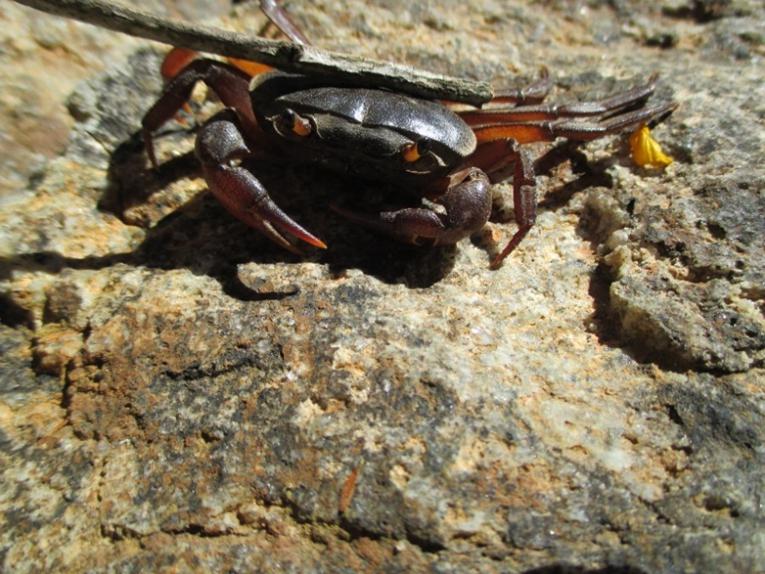Joshua Tsamba
The aim of the project will be to assess, identify and quantify the natural and anthropogenic threats to freshwater invertebrate and amphibian biodiversity in Eastern Highlands, Zimbabwe.

Close up view of the crab species Potamonautes obesus
The Eastern Highlands, Zimbabwe are a biodiversity hotspot full of endemic species which are generally threatened and face higher risk of extinction. Accelerated anthropogenic activities including mineral exploitation, industrial development, expanding human settlements, increased agricultural hectarage, deforestation and ecotourism are posing a threat to aquatic resource biodiversity in the Eastern Highlands. It is hoped that studies of the aquatic invertebrate fauna would prove extremely useful in assessing the ecological distinctiveness of the Eastern Highlands, Zimbabwe. Our premise for this project is that an inventory of aquatic invertebrates (freshwater crabs, macroinvertebrates, diatoms and molluscs) and amphibians’ diversity is a powerful indicator of the impact of human activities on the aquatic systems within this area.
This project will establish the conservation status of aquatic invertebrates and amphibians in streams in the Eastern Highlands, Zimbabwe. These findings will direct conservation efforts. The project will help in identifying, quantifying and assessing the impact of human activities on aquatic biodiversity. The combined assessment of the conservation status of aquatic invertebrates and amphibians, and the impact of human activities on aquatic habitats will aid in the crafting of a management framework for proper utilization of aquatic resources. Increased environmental awareness will be achieved through seminars, school outreaches and network with local stakeholders. Training of local stakeholders like National Parks and Wildlife authority officials will help in human resource capacitation at a local level which ensures continued conservation of aquatic resources.